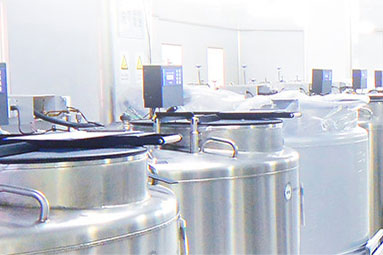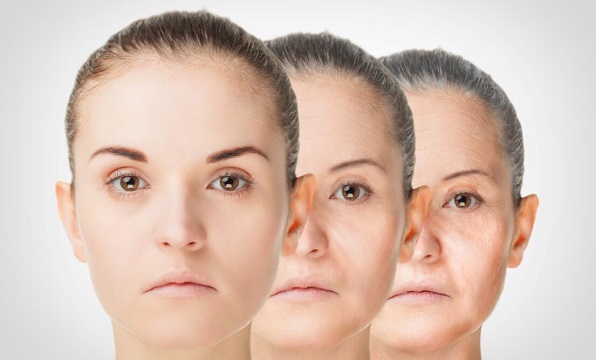Continuous supply of rejuvenated stem cells shown as a path to radical longevity
Researchers from Kiel (Germany) have examined why the polyp Hydra is immortal – and unexpectedly discovered a link to ageing in humans. The tiny freshwater polyp Hydra does not show any signs of ageing and is potentially immortal. There is a rather simple biological explanation for this: these animals exclusively reproduce by budding rather than by mating. A prerequisite for such vegetative-only reproduction is that each polyp contains stem cells capabprle of continuous proliferation. Without these stem cells, the animals could not reproduce any more. Due to its immortality, Hydra has been the subject of many studies regarding ageing processes for several years.
Studying animal tissue such as those of Hydra – an animal full of active stem cells during all its life – may deliver valuable insight into stem cell ageing as such.
„Surprisingly, our search for the gene that causes Hydra to be immortal led us to the so-called FoxO gene“, says Anna-Marei Böhm, PhD student and first author of the study. The FoxO gene exists in all animals and humans and has been known for years. However, until now it was not known why human stem cells become fewer and inactive with increasing age, which biochemical mechanisms are involved and if FoxO played a role in ageing.
FoxO has been found to be particularly active in centenarians – people older than one hundred years – which is why we believe that FoxO plays a key role in ageing – not only in Hydra but also in humans“. However, the hypothesis cannot be verified on humans, as this would require a genetic manipulation of humans.
PNAS – FoxO is a critical regulator of stem cell maintenance in immortal Hydra
There is a project that is trying to increase the supply of a persons own stem cells by a million times and then rejuvenate the stem cells. They are trying to fund raiser for a kickstarter style project. I think it is worth a shot to get the project funded for another $69000, to give this approach a try
Centagen is a biotechnology company that is developing medical therapies that utilize a patient’s own adult stem cells. The company has a new technology to expand adult stem cells in vitro (in the lab) up to 1 million times, then rejuvenate them and inject the stem cells back into the person from which they came. This will help repair and rejuvenate organs and tissues damaged by aging, disease and injury. The process may even help healthy people stay young.
They can multiply the rare adult stem cells in cell culture without aging them or degrading their function. One innovation involves lengthening the telomeres while amplifying the stem cells.
Stem cells were taken from a third party and used to repair heart scar tissue.
One treatment of rejuvanted stem cells lengthened lifespan of mice by up to 24%
This suggests that even longer lifespan increases would be possible with a continuous supply of rejuvated stem cells.
Telomerase prevents shortening of telomeres and it has been used to immortalize stem cells outside of the body.
new study consisting of inducing cells to express telomerase, the enzyme which — metaphorically — slows down the biological clock — was successful. The research provides a “proof-of-principle” that this “feasible and safe” approach can effectively “improve health span.” Researchers have demonstrated that the mouse lifespan can be extended by the application in adult life of a single treatment acting directly on the animal’s genes. And they have done so using gene therapy, a strategy never before employed to combat aging. The therapy has been found to be safe and effective in mice.
Mice treated at the age of one lived longer by 24% on average, and those treated at the age of two, by 13%. The therapy, furthermore, produced an appreciable improvement in the animals’ health, delaying the onset of age-‐related diseases — like osteoporosis and insulin resistance — and achieving improved readings on aging indicators like neuromuscular coordination.
The gene therapy consisted of treating the animals with a DNA-modified virus, the viral genes having been replaced by those of the telomerase enzyme, with a key role in aging. Telomerase repairs the extreme ends or tips of chromosomes, known as telomeres, and in doing so slows the cell’s and therefore the body’s biological clock. When the animal is infected, the virus acts as a vehicle depositing the telomerase gene in the cells.
This study “shows that it is possible to develop a telomerase-based anti-aging gene therapy without increasing the incidence of cancer,” the authors affirm. “Aged organisms accumulate damage in their DNA due to telomere shortening, [this study] finds that a gene therapy based on telomerase production can repair or delay this kind of damage,” they add.
Reference:
http://nextbigfuture.com/2012/11/continuous-supply-of-rejuvenated-stem.html






SUBSCRIBE TO OUR NEWSLETTER